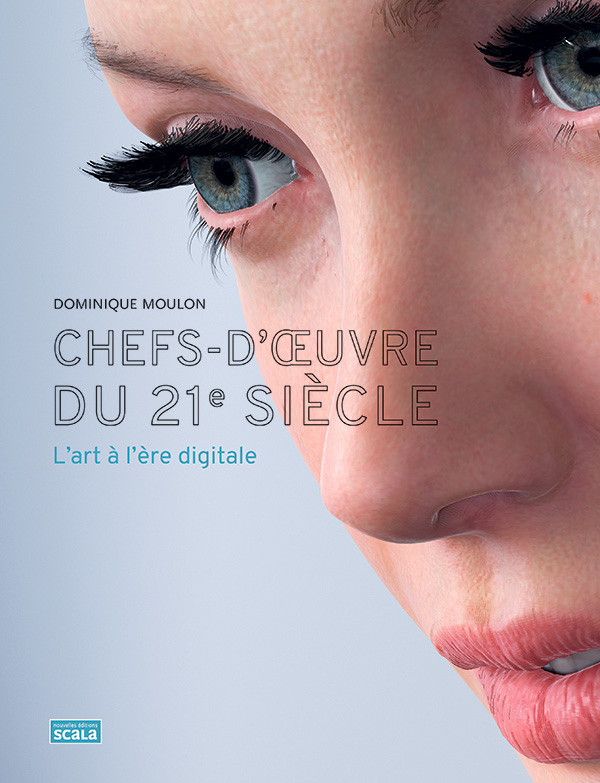French artist Justine Emard (1987) has a keen interest in the technology she uses or that she features. In 2016, this marked interest in technologies, including those related to artificial intelligence, led her to initiate exchanges or collaborations with researchers such as Takashi Ikegami and Hiroshi Ishiguro, respectively from the University of Tokyo and Osaka. Together with their laboratories, they created the Alter robot, which is on permanent display at the National Museum of Emerging Science and Innovation (Miraikan) in Tokyo. Takashi Ikegami designed the primitive life form which, based on a neural network, allows the robot to animate itself in a completely autonomous way. Hiroshi Ishiguro, whose research focuses more specifically on presence, gave it its humanoid appearance. The Alter robot is equipped with a multitude of sensors and learns from its immediate environment by expressing itself through gestures and sounds that it – because it has no gender or age – must literally ‘invent’. And Justine Emard initiates possible encounters beyond the rather conventional ones that the Miraikan Museum usually allows.
The first of these encounters takes place via the images of the video installation Reborn initiated in 2016. It is therefore a promise of an encounter rather than an encounter between the Japanese actor and dancer Mirai Moriyama and Alter, but a promise kept since Justine Emard, the following year, brings together the human and the non-human by organising the performance Co(AI)xistence. Since then, this performance has travelled the world through its video documentation. The data shows Alter’s intense ‘neural’ activity, then the performer comes up to it to greet it, as he should, before talking to it. The robot’s responses are audible rather than comprehensible. When Mirai Moriyama talks about its nudity, he refers to the fact that nothing, apparently, is hidden from us that
mechanically sets the robot in motion. There follows a form of choreography that the two protagonists develop in real time and which involves, in particular, the contact between skin and latex. Both of them tune their respective gestures in exchanges that seem to go beyond the simple coexistence of two intelligences, one human and the other non-human.
In 2018, the non-human, with its share of presence, is at the centre of this other encounter entitled Soul Shift, where two versions of the same Alter are present. One of the two has ‘given up the ghost’ in this country where objects are often given a soul. Thus, the memory of the Alter has been transferred to Alter 2, which, when activated, seems to wake up to the world before considering this other version of its temporarily inactive self. It is the only one to gesticulate while emitting sounds that we have learned are futile to try to understand anymore, so we easily project ourselves into its possible solitude. We are privileged witnesses of another form of empathy when the active Alter 2 faces the inactive Alter, interpreting its movement towards the other as that of affection tinged with resignation. This is Justine Emard’s work, which aims to encourage us to consider robots, among other machines, well beyond their mechanical and electronic components, which she poeticizes a little more as she brings intelligences together.
Dominique Moulon
Dominique MoulonMasterpieces of the 21stCentury Art in the Digital Age
This book was also published in Frenchincluding colour photographs
by Nouvelles éditions Scala (Paris)in Septembre 2021.
Translated by Geoffrey Finch
Independently published byDominique Moulon (Paris)in September 2021,ISBN 979-8-547-78536-8Printed on demand by Amazon
